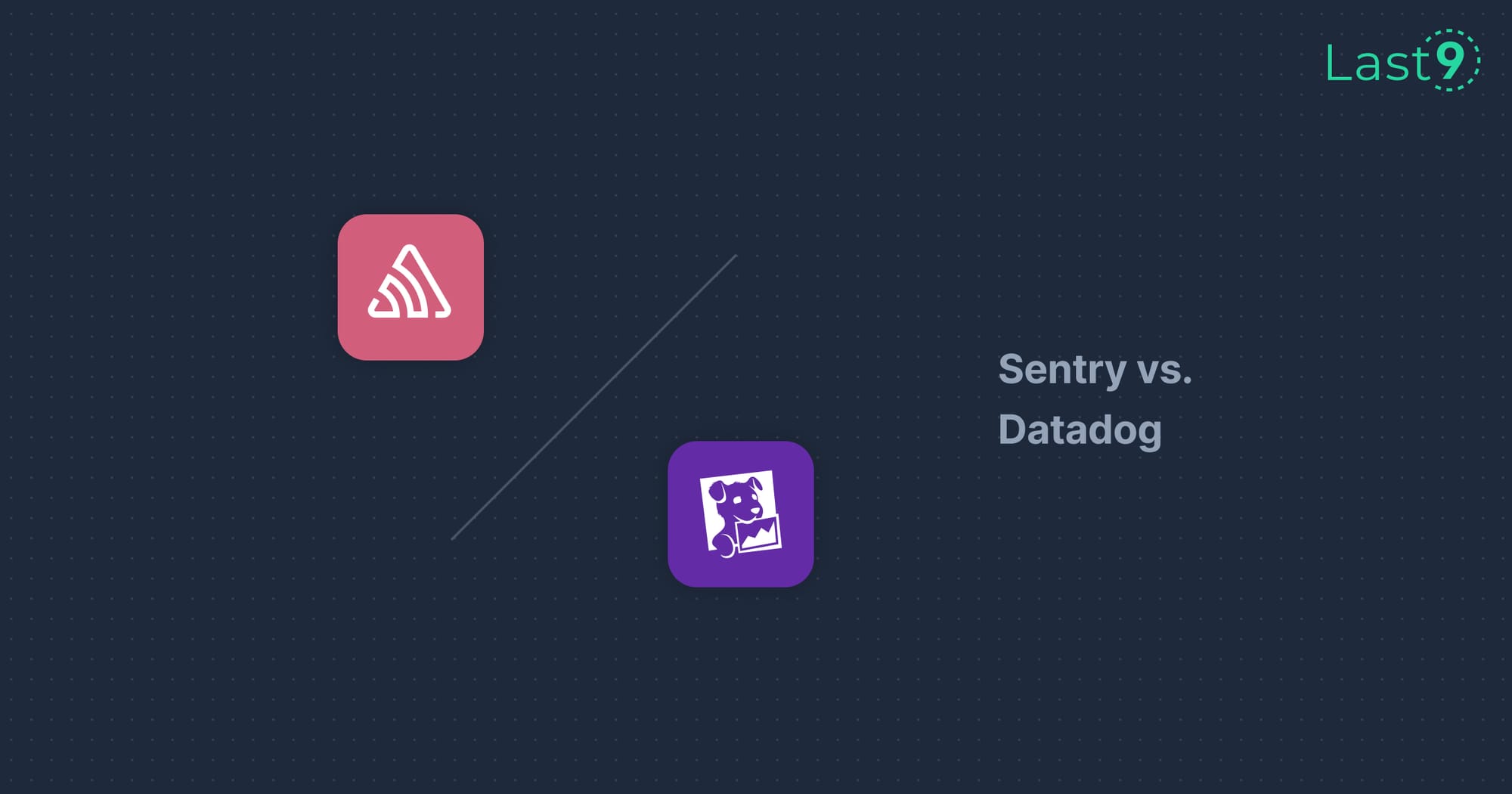If you're in the trenches of modern software development, you know that observability is not just a buzzword—it's a necessity.
Logs, metrics, and traces give you insight into how your applications behave in production, and two major solutions dominate this space: OpenTelemetry and the ELK stack.
But which one should you use? Do they compete or complement each other? Let's break it all down.
What is OpenTelemetry?
OpenTelemetry (often abbreviated as OTel) is an open-source observability framework that standardizes telemetry data collection (metrics, logs, and traces). Backed by the Cloud Native Computing Foundation (CNCF), it provides SDKs, APIs, and agents that allow you to instrument your applications without being locked into any specific vendor.
Key Features of OpenTelemetry
- Unified Observability – Collects traces, logs, and metrics in a standardized way.
- Vendor-Agnostic – Send data to any backend (Jaeger, Prometheus, Elastic, Datadog, etc.).
- Supports Multiple Languages – Works with Java, Go, Python, Node.js, .NET, and more.
- Integrates with Cloud-Native Tools – Kubernetes, Istio, and other cloud platforms support OTel.
- Community-Driven – Rapidly evolving with contributions from major cloud providers.
What is the ELK Stack?
ELK stands for Elasticsearch, Logstash, and Kibana. Together, they form a powerful log management and analysis solution widely used for centralized logging and monitoring.
Core Components of the ELK Stack
- Elasticsearch – A distributed search and analytics engine that stores and indexes logs.
- Logstash – A data processing pipeline that collects, transforms, and ships logs to Elasticsearch.
- Kibana – A visualization tool to analyze logs, build dashboards, and monitor systems in real-time.
- (Bonus: Beats – Lightweight data shippers that forward logs and metrics to Logstash or Elasticsearch.)
Key Features of ELK
- Real-Time Log Analysis – Quickly search, filter, and analyze logs.
- Scalability – Handles petabytes of log data.
- Custom Dashboards – Kibana provides deep insights into system performance.
- Extensive Integrations – Works with Kubernetes, AWS, and various log sources.
- Open Source & Enterprise Editions – Free for basic use, with premium features available.
OpenTelemetry vs. ELK: Head-to-Head Comparison
| Feature | OpenTelemetry | ELK Stack |
|---|---|---|
| Primary Use Case | Tracing & Metrics Collection | Log Management & Analysis |
| Data Types | Traces, Metrics, Logs | Logs (primary), some Metrics |
| Vendor Lock-In | None (Open Standard) | Some, if using Elastic’s ecosystem |
| Cloud-Native Support | Strong Kubernetes & microservices integration | Good support, but heavier setup |
| Instrumentation | Requires SDK integration in code | Collects logs passively via agents |
| Visualization | External backends (Jaeger, Grafana, Prometheus) | Kibana (Built-in) |
| Scalability | High (depends on backend) | High (but requires tuning) |
| Ease of Use | Requires setup but flexible | Easier for log analysis |
| Cost | Free & Open Source (Backend costs vary) | Free & Open Source (Enterprise features paid) |
Detailed Comparison of Features: OpenTelemetry vs. ELK
OpenTelemetry and the ELK stack both offer robust observability solutions, but they excel in different areas. OpenTelemetry is designed for distributed tracing and metrics collection, while ELK is primarily focused on centralized log management and analysis.
Key Differences in Features
- Tracing vs. Logging: OpenTelemetry specializes in distributed tracing, allowing developers to track requests across microservices, whereas ELK is optimized for log aggregation and search.
- Instrumentation: OpenTelemetry requires application-level instrumentation to collect telemetry data, while ELK passively collects logs from system and application sources.
- Visualization & Analysis: ELK provides built-in visualization tools via Kibana, whereas OpenTelemetry relies on external backends like Jaeger or Grafana for visualization.
- Scalability: OpenTelemetry's flexibility allows it to scale efficiently with cloud-native environments, whereas ELK requires proper tuning and infrastructure to handle large log volumes.
- Flexibility & Vendor Lock-in: OpenTelemetry is fully vendor-agnostic, allowing integration with multiple observability platforms, whereas ELK has some level of vendor lock-in, especially with Elastic’s enterprise offerings.
When to Use OpenTelemetry
OpenTelemetry is a great choice if:
- You need distributed tracing to debug microservices.
- You want a unified solution for logs, metrics, and traces.
- You prefer a vendor-agnostic approach that integrates with multiple backends.
- You're working with Kubernetes or cloud-native environments.
When to Use the ELK Stack
ELK is better suited when:
- You primarily need log aggregation and analysis.
- You want out-of-the-box search and visualization capabilities (Kibana).
- You are dealing with large volumes of application and system logs.
- You need centralized logging for on-prem or cloud-based environments.
Can OpenTelemetry and ELK Be Used Together?
Yes! OpenTelemetry can collect logs and send them to Elasticsearch, allowing you to use Kibana for visualization. You can also use OTel traces alongside ELK for deeper context into your logs. Some teams use OpenTelemetry for tracing and Prometheus for metrics while keeping ELK for logging.
Community and Support of Opentelemetry and ELK Stack
OpenTelemetry Community & Support
- OpenTelemetry has a thriving open-source community under the Cloud Native Computing Foundation (CNCF).
- Developers can access extensive documentation, GitHub discussions, and community meetings to stay updated.
- Major cloud providers like Google, Microsoft, and AWS contribute to its development, ensuring strong support.
- Slack channels, forums, and CNCF-hosted events provide real-time assistance and collaboration opportunities.
ELK Stack Community & Support
- The ELK stack, developed by Elastic, has both a strong open-source community and a commercial support model.
- Elastic offers official documentation, training, and enterprise-grade support for customers.
- The open-source community maintains GitHub repositories, discusses issues on forums like Discuss.Elastic.co, and contributes to plugins and integrations.
- Kibana users can access community-shared dashboards, making it easier to get started.
How OpenTelemetry and ELK Are Used in Practical Scenarios
Understanding where each tool excels can help you make the right decision based on your specific needs.
OpenTelemetry Use Cases
- Microservices Observability: OpenTelemetry is ideal for tracking requests across distributed systems, making it a must-have for cloud-native applications.
- Application Performance Monitoring (APM): Developers use OTel to measure application performance, identify bottlenecks, and optimize latency.
- Kubernetes Monitoring: OpenTelemetry integrates seamlessly with Kubernetes, providing insights into pod and service interactions.
- Multi-Cloud and Hybrid Environments: Since OpenTelemetry is vendor-agnostic, it allows organizations to standardize observability across multiple platforms.
ELK Stack Use Cases
- Centralized Log Management: ELK excels in aggregating logs from various sources, providing a single pane of glass for analysis.
- Security and Compliance: Many organizations use ELK for SIEM (Security Information and Event Management) to detect and investigate security incidents.
- Infrastructure Monitoring: System administrators use ELK to track server health, network activity, and application logs.
- Business Analytics: By processing and visualizing large datasets, ELK helps businesses make data-driven decisions beyond just IT monitoring.
Final Thoughts
OpenTelemetry and ELK serve different but overlapping purposes. If you need deep observability in distributed systems, OpenTelemetry is the way to go. If log management and real-time search are your priorities, ELK might be the better fit. And if you need both? They can complement each other beautifully.
It ultimately comes down to your use case, existing infrastructure, and team expertise. Which one are you leaning towards?
At Last9, we simplify Cloud Native monitoring for companies like Probo, CleverTap, Replit, and Axio.
Our platform integrates with Prometheus and OpenTelemetry, unifying metrics, logs, and traces while handling high-cardinality data with ease.
With a streamlined Control Plane, smart alerting, and real-time metrics, we help engineering teams gain deeper insights and ensure system reliability.
Schedule a demo to enhance your observability today!



